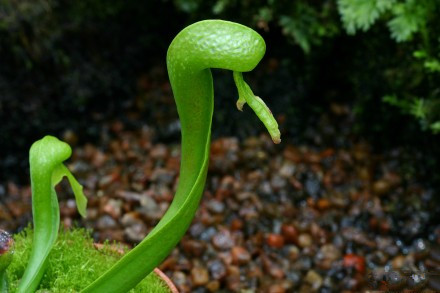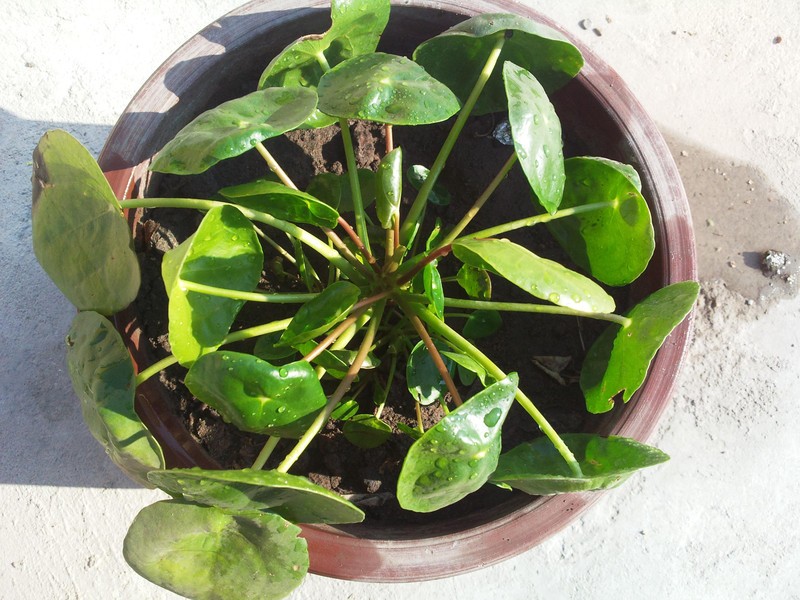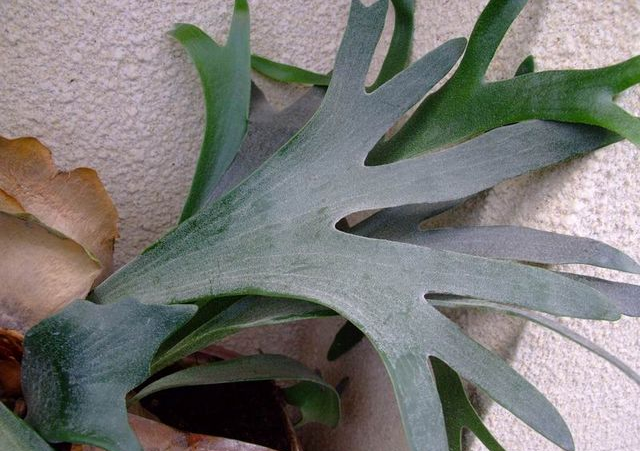Key points of cultivation of cobra bottle grass
Cobra bottle grass is one of the genera of the family Cryptomellidae, which is a kind of insectivorous plant, mainly distributed in northern California and Oregon. Cobra bottle grass is a very well-known insectivorous plant species, named for its resemblance to cobras, and is the target of many players' collections. The left and right sides of their caps stick together to form a spherical top, making the whole bottle almost sealed. There is a sunken gap between the spherical bottle cap and the bottle body. There are many white markings on the caps and bottles that lack chlorophyll, through which sunlight can be shone into the trap bottle. Insects (mostly ants) can enter the bottle through the slits. Once inside, they will be confused by these white spots, mistakenly thinking that the white spots are lost in the trap bottle for □, and finally fall into the digestive juice and be digested.
Matrix
Peat, sand, water moss, peat, perlite, coconut shell and so on.
Watering
Need to use soft water irrigation, such as Rain Water, distilled water, reverse osmosis deionized water and so on. Tap water in some areas contains a lot of minerals (especially calcium salts). These calcium salts will be deposited, killing plants. This is because most insectivorous plants have adapted to poor acidic soils, so they are extremely calcium-avoiding plants, so they are sensitive to nutrients in the soil.
Temperature
Resistant to cold and heat, especially to keep the root cold, there should be a large temperature difference between day and night; it can survive between minus 10 degrees and 30 degrees, and 15 to 27 degrees is the most suitable temperature for its growth. Like strong light, in the temperature is not too high, can accept the sunlight, the top of the plant will show a red net pattern, very beautiful.
Diseases and insect pests
Vulnerable to aphids or pink scale. Smaller hazards should be removed by hand, while larger hazards should be treated with pesticides as appropriate. Isopropanol is an effective insecticide against scale insects. Perazinone is also a broad-spectrum insecticide that most insectivorous plants can tolerate. Malathion and acephate are also suitable for insectivorous plants.
Although pests are a problem, the biggest problem is Botrytis cinerea. It develops in a warm and humid environment and becomes a serious problem in winter. Put it in a cool, well-ventilated environment and remove the diseased branches in time, which can inhibit the development of Botrytis cinerea to a certain extent. If it fails, fungicides should be used as appropriate.

Key points of cultivation of cobra bottle grass
Cobra pitcher grass is a very famous insectivorous plant, which is named because its shape is very similar to that of cobra, and it is also the target of many plant lovers. So how should cobra bottle grass be planted?
Cobra bottle grass
Cobra pitcher grass is one of the insectivorous plants that are difficult to cultivate. It requires higher daytime temperature and lower night temperature. Its native place is a swamp or river bank that has cold mountain springs flowing into it all the year round, and the root can keep a low temperature all the time. Therefore, the best simulation method in cultivation is to cultivate in cool pure water. Ice can be placed on the surface of the soil to cool down when the weather is hot. In a high humidity and warm environment, plants can be given sufficient sunshine; if the humidity is low or the range of change is large, a little shade is needed.
It is very difficult and slow to plant cobra bottle grass from the seedlings, so it usually propagates with its stolon in late winter or spring. Usually from the Spring Equinox to late spring, many small teeth grow on the stolon internodes. Cut the stolon into several segments, each with some roots. Then put these stem segments on cool, damp broken water moss to keep the environment bright and humid. The bud development can be seen after a few weeks.
Like other insectivorous plants growing in temperate regions, cobra bottle grass needs to be dormant in winter in order to survive for a long time. The plant stops growing for 3 to 5 months in winter. Until near spring, mature plants grow a single flower and several large insect bottles a few weeks later. It will continue to grow insect bottles throughout the summer, but its size is much smaller than that in spring.
Many growers have successfully cultivated cobra bottle grass and found three variants: all-green, all-red, red-green. The wild cobra bottle grass is all green in general sunlight and red-green in strong light.
Key points of cultivation of cobra bottle grass
Cobra bottle grass is one of the genera of the family Cryptomellidae, which is an insectivorous plant, mainly distributed in northern California and Oregon. Cobra bottle grass is a very well-known insectivorous plant species, named for its resemblance to cobras, and is the target of many players' collections. The left and right sides of their caps stick together to form a spherical top, making the whole bottle almost sealed. There is a sunken gap between the spherical bottle cap and the bottle body. There are many white markings on the caps and bottles that lack chlorophyll, through which sunlight can be shone into the trap bottle. Insects (mostly ants) can enter the bottle through the slits. Once inside, they will be confused by these white spots, mistakenly thinking that the white spots are lost in the trap bottle for the exit, and finally fall into the digestive juice and be digested.
Matrix
Peat, sand, water moss, peat, perlite, coconut shell and so on.
Watering
Need to use soft water irrigation, such as Rain Water, distilled water, reverse osmosis deionized water and so on. Tap water in some areas contains a lot of minerals (especially calcium salts). These calcium salts will be deposited, killing plants. This is because most insectivorous plants have adapted to poor and acidic soils, so they are extremely calcium-avoiding plants, so they are very sensitive to nutrients in the soil.
Temperature
Resistant to cold and heat, especially to keep the root cold, there should be a large temperature difference between day and night; it can survive between minus 10 degrees and 30 degrees, and 15 to 27 degrees is the most suitable temperature for its growth. Like strong light, in the temperature is not too high, can accept the sunlight, the top of the plant will show a red net pattern, very beautiful.
Diseases and insect pests
Vulnerable to aphids or pink scale. Smaller hazards should be removed by hand, while larger hazards should be treated with pesticides as appropriate. Isopropanol is an effective insecticide against scale insects. Diazinone is also a broad-spectrum insecticide that most insectivorous plants can tolerate. Malathion and acephate are also suitable for insectivorous plants.
Although pests are a problem, the biggest problem is Botrytis cinerea. It develops in a warm and humid environment and becomes a serious problem in winter. Put it in a cool, well-ventilated environment, and remove the diseased branches in time, which can inhibit the development of Botrytis cinerea to some extent. If it fails, fungicides should be used as appropriate.
- Prev

Culture methods and matters needing attention of mirror grass
Thinning is applied every half a month in the growing season, but it should be noted that too much nitrogen fertilizer will make it easy for leaves to blossom and bear fruit in warm areas. When planting, there should be decaying soil with good drainage to mix sand. And use a basin bottom to facilitate drainage. Loose, fertile and humus-rich sandy loam should be selected for reproduction and cultivation.
- Next

Breeding methods and principles of Ceratopteris Dryopteris
[ramet time]: it is best to do it after the soil is thawed in early spring (February, March). [ramet method]: take the mother plant out of the flowerpot, shake off the excess pot soil, separate the root system as far as possible, and cut it into two or more plants with a sharp knife.
Related
- Fuxing push coffee new agricultural production and marketing class: lack of small-scale processing plants
- Jujube rice field leisure farm deep ploughing Yilan for five years to create a space for organic food and play
- Nongyu Farm-A trial of organic papaya for brave women with advanced technology
- Four points for attention in the prevention and control of diseases and insect pests of edible fungi
- How to add nutrient solution to Edible Fungi
- Is there any good way to control edible fungus mites?
- Open Inoculation Technology of Edible Fungi
- Is there any clever way to use fertilizer for edible fungus in winter?
- What agents are used to kill the pathogens of edible fungi in the mushroom shed?
- Rapid drying of Edible Fungi

